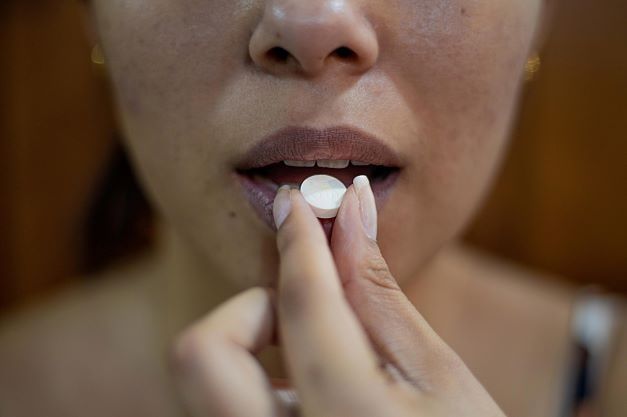Antidiabetic nanoparticles show greater effectiveness than tablets
A study was conducted to improve the administration of glibenclamide in an oral suspension. Blood glucose levels decreased with a dose five times lower than that of tablets. It shows greater absorption and avoids gastric irritation, other benefits.

In 2030 Mexico will occupy the seventh position in the world in diabetes cases. This is a serious public health problem that must be addressed in every possible way to improve control of the disease in those who suffer from it, said José Juan Escobar Chávez, an academic at the Faculty of Higher Education (FES) Cuautitlán.
That is why -in collaboration with Omar Rodrigo Guadarrama Escobar, a recent doctorate graduate of this academic institution- he developed polymeric nanoparticles loaded with an antidiabetic, in this case, glibenclamide, a useful drug for the treatment of this chronic disorder that affects how the body processes glucose in the blood.
Type 2 diabetes mellitus is one of the leading causes of mortality (deaths) and morbidity (number of people who become ill in a given place and period to the total population globally). According to data from the National Institute of Public Health, in the case of Mexico, it is, as of 2000, the main cause of death in women and the second in men.
It is highly linked to the group of risk factors that constitute the metabolic syndrome: elevated glucose and triglycerides, hypertension, and obesity said the FES Cuautitlán academic, who together with graduate students is working on the design of new ways of applying drugs for the benefit of society.
Their care represents a high economic cost for both the health sector and the patients. According to the research carried out by Omar Guadarrama, in 2010 alone, scientists from the National Institute of Public Health calculated that the most important cost is associated with medications with 133 million 143,734 pesos, followed by the complications of the disease, which represented more than 110 million pesos, among other aspects, Escobar Chavez pointed out.
In detailing the research project, Escobar Chávez indicated that the pharmaceutical innovation was tested in an animal model: previously diabetic rats to evaluate the functionality and efficacy of the process, with positive results. The nanoparticles loaded with the antidiabetic were administered to the animal orally, utilizing a suspension.
He explained that the rats were induced with type 2 diabetes mellitus with the application of streptozotocin -an antibiotic that has antitumor properties and has a cytotoxic action on the beta cells of the pancreas (meaning that it damages this organ and stops producing insulin, the hormone that controls glucose levels in the organism).
Five groups of rodents were used: diabetics without treatment; diabetics treated with glibenclamide tablets; diabetics treated with glibenclamide polymeric nanoparticles; diabetics treated with nanoparticles without glibenclamide; as well as the control group.
José Juan Escobar explained that the results obtained in the laboratory revealed that the suspension with nanoparticles proved to be quite functional and lowered blood glucose levels with a dose five times lower than that of the tablets.
"It showed an increase in the amount of glibenclamide absorbed by the body, only because it was administered through nanoparticles," he said.
With this new formulation, it reaches the site of action (the pancreas); that is, where it performs its pharmacological effect, thus requiring a lower dose for the treatment, avoiding gastric irritation and protecting the drug better.
"It is important to mention that when glibenclamide is administered in tablets, the body only absorbs 30 percent of the dose of the tablets, while the remaining 70 percent is wasted. By encapsulating the antidiabetic in polymeric nanoparticles, more of the dose required to control this disease is used," emphasized the university professor.
In the study, they worked with materials that are not expensive so that their manufacture at scale is not expensive either. In addition, the process of preparation of the nanoparticles is simple so that, if at any given moment it is taken to the industry -once this university initiative is patented-, it would be quite effective and not expensive for the patients.
He explained that its development is one of the options that exist to treat diabetes. "All the pharmaceutical forms that exist in the market have their importance and relevance, as well as their advantages and disadvantages, none replaces any other; at the end of the day it is an interesting option that we can use at any given moment to treat different pathologies".
At present, nanotechnology is a platform of interest to vectorize drugs (control of the place where the release occurs) and avoid the problems or disadvantages that other routes of drug administration could have.
The university expert warned that those patients who do not have adequate control of the disease could develop diabetic retinopathy -even blindness-, nephropathy (kidney alterations or damage that could require dialysis); or poor healing that could lead to diabetic foot and possible amputation of the limb.
José Juan Escobar mentioned that it is necessary to generate new options to provide medications that are as benevolent as possible for the organism. "If they are already diagnosed as diabetic, at least their quality of life should not be detrimental, but should remain as stable as possible".
Source: UNAM




